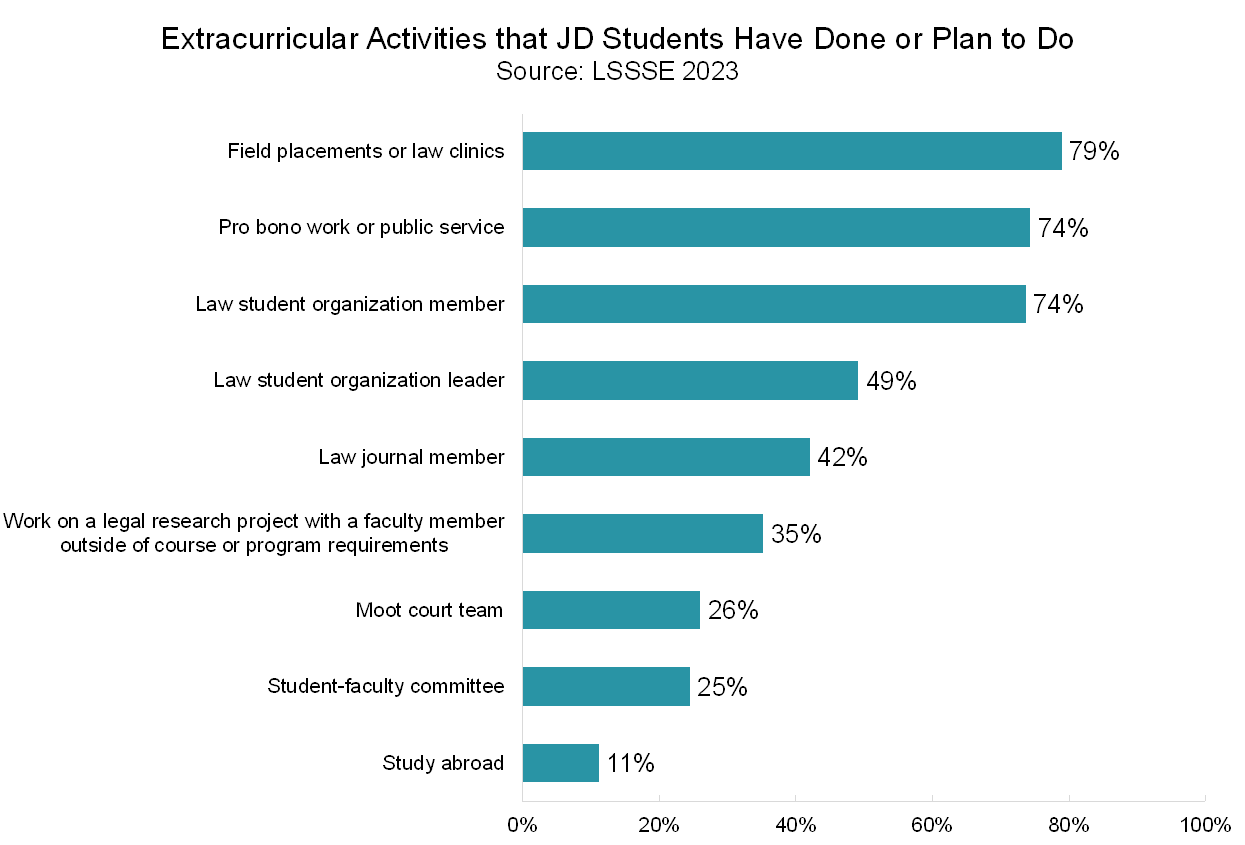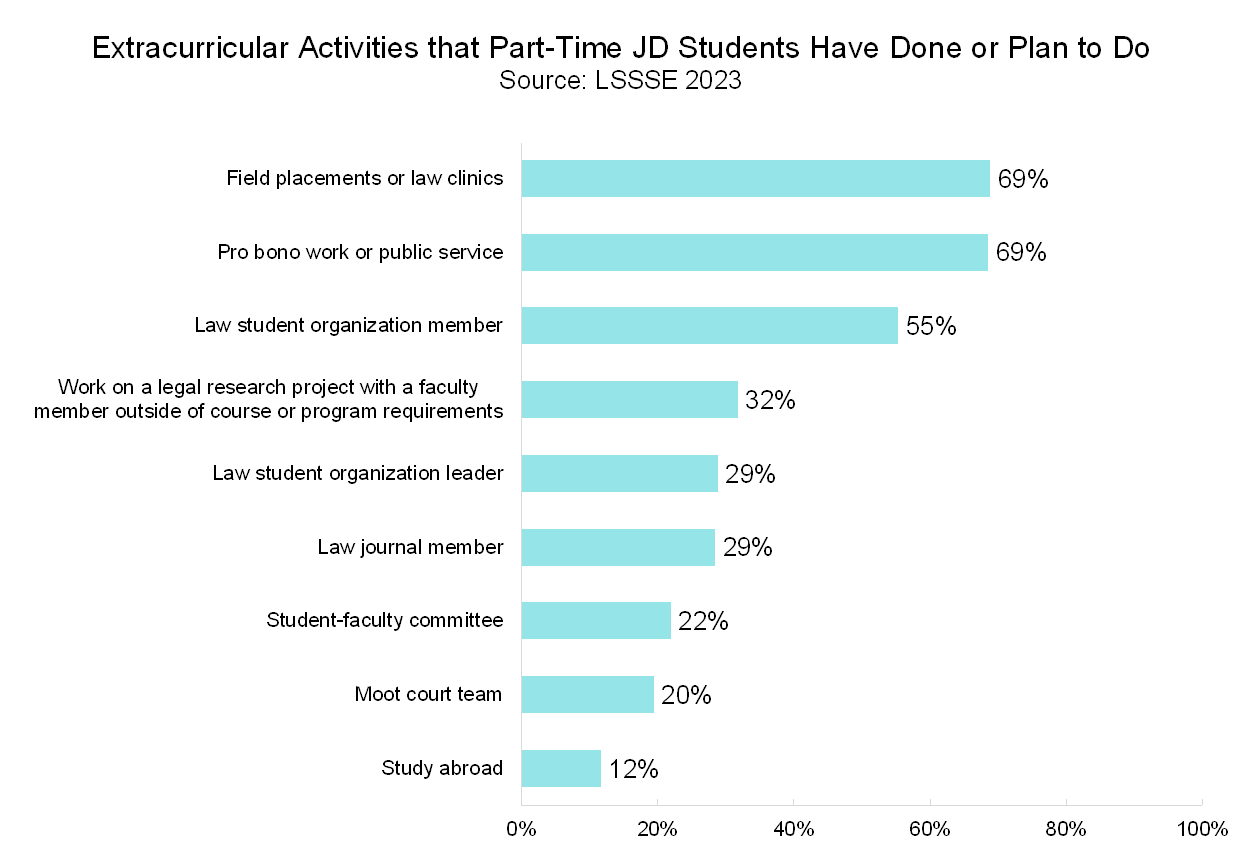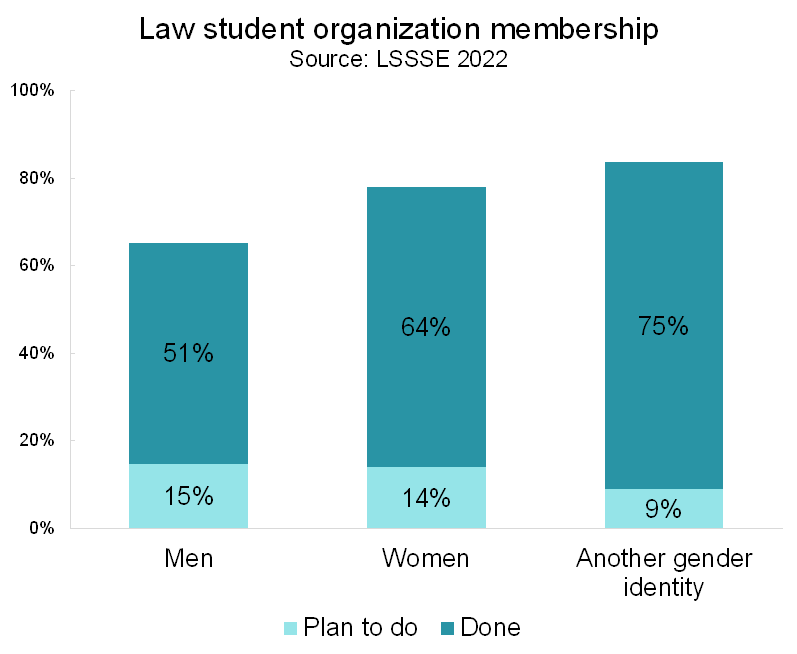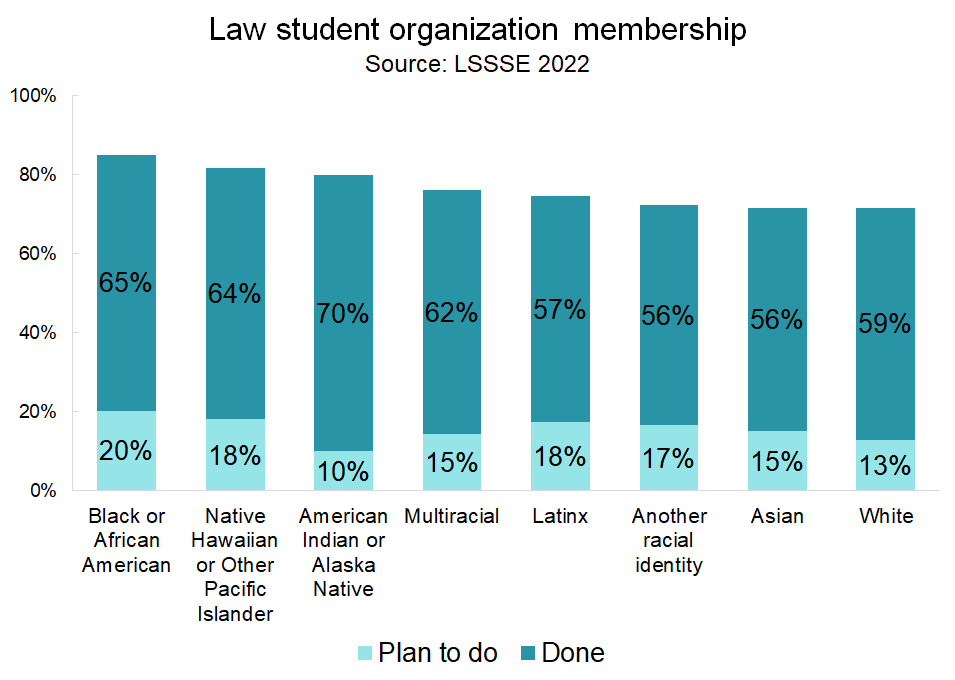Extracurricular Activity Participation Among JD Students
Although reading, class preparation, and classroom engagement are crucial to law student success, extracurricular activities provide unique experiences for hands-on learning and skill development. LSSSE asks about the activities in which law students have either already participated or plan to participate in the future. Which activities attract the most law students?
The majority of law students plan to complete a field placement (79%), engage in pro bono work or public service (74%), and join a law student organization (74%) before graduation. Around half of law students will be or already have been a law student organization leader, and around two in five are drawn to serving as a law journal member. However, students are somewhat less likely to include moot court and working with faculty members on research or committees in their extracurricular plans. Most law students do not plan to study abroad.

We know from previous LSSSE research that part-time students are somewhat less likely than their full-time classmates to engage in extracurricular activities. When we zoom in on part-time students specifically, which activities do they tend to make their highest priorities?
Field placements, pro bono work, and law student organization membership remain at the top of the list for part-time students. However, only about half of part-time students plan to join a student organization. Around a third (32%) of part-time students are interested in working on a legal research project, and around three in ten part-time students (29%) either have been or want to be a law journal member.

Clearly, being a law student is not a 9-5 endeavor. Most law students are engaged in a variety of activities beyond the bare minimum of class attendance and participation. These activities provide them with vital experiences and professional contacts that they will take forward into their legal careers.
Engagement with Law Student Organizations
Law student organizations are important venues for developing law students’ professional identities. Through networking, invited speakers, and events, these organizations foster a sense of community and provide students the opportunity to more intensely explore areas of law that interest them. [1]
Law student organizations are among the most popular enriching activities at law schools. Nearly three-quarters (73%) of law students either plan to join a law student organization or have already done so. About 31% of students have served as law student organization leaders, and another 18% plan to take on a leadership role before they graduate. Men are less likely to join student organizations compared to women and those of another gender identity. In 2022, just 51% of men had already joined an organization compared to 64% of women and 75% of those with another gender identity.

Black students are particularly engaged as members of law student organizations, with 65% of Black students participating and another 20% planning to do so. Native Hawaiian students, American Indian students, and Alaska Native students have similarly high levels of engagement with law student organizations, while Asian and white students have the lowest participation rates.

Women, gender-diverse people, and students of color are most likely to join student organizations. Thus, these organizations likely play a vital role in connecting law students who traditionally face higher barriers in accessing higher education and assimilating successfully into the legal profession. Law student organizations also given students the opportunity develop their leadership skills and to work with their professors and classmates in a non-classroom context.
____
[1] See Andrew Hitt, The importance of student organizations, (Aug. 27, 2009), https://law.marquette.edu/facultyblog/2009/08/the-importance-of-student-organizations/


